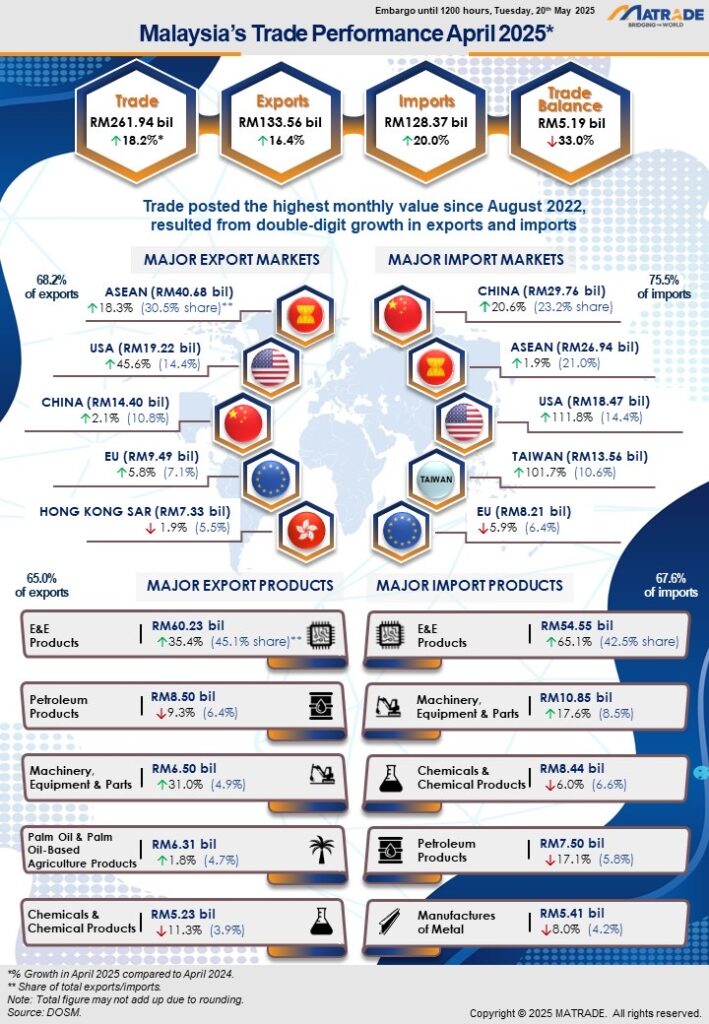The growth in exports was predominantly driven by robust demand for manufactured goods, particularly electrical and electronic (E&E) products, which increased by almost RM16 billion. Another equally important sector was agriculture goods, especially palm oil and palm oil-based agriculture products which also played a significant role in
supporting the overall expansion in exports.
In terms of markets, strong export growth was posted to major trading partners, namely ASEAN, China, the United States (US), the European Union (EU), and to Taiwan which reached a new record high. Overall exports to Free Trade Agreement (FTA) partners also saw a strong rebound. Among markets that recorded export increases were Mexico, India and the Republic of Korea (ROK), attributed to higher shipments of E&E products.
During the period January to April 2025, trade, exports and imports recorded the highest periodic value to date. Trade was up by 7.2% y-o-y to RM977.61 billion, exports rose 7.3% to RM511.92 billion and imports climbed 7% to RM465.69 billion. Trade surplus recorded double-digit growth of 10.4% to RM46.23 billion.
Net exports contributed to Malaysia’s achievement of a 4.4% Gross Domestic Product (GDP) in the first quarter of 2025, as reported by Bank Negara Malaysia (BNM). Additionally, World Trade Organization’s (WTO) recent report also showed, Malaysia’s improvement in global trade ranking to 24th position in 2024, from the 26th place in 2023.
In recognition of how global trade challenges may hamper the pace of growth, MITI and its export promotion agency, MATRADE, are intensifying efforts to increase exports, while also diversifying Malaysia’s export destinations.
In addition to maintaining strong ties with established trade partners, MATRADE is actively exploring emerging markets through strategic initiatives such as international trade fairs, export acceleration missions, business matching programmes and the MADANI Digital Trade (MDT) platform. These initiatives are aimed at empowering Malaysian exporters, particularly small and medium enterprises (SMEs) and mid-tier companies (MTCs) to boost their global competitiveness and broaden their international reach.










